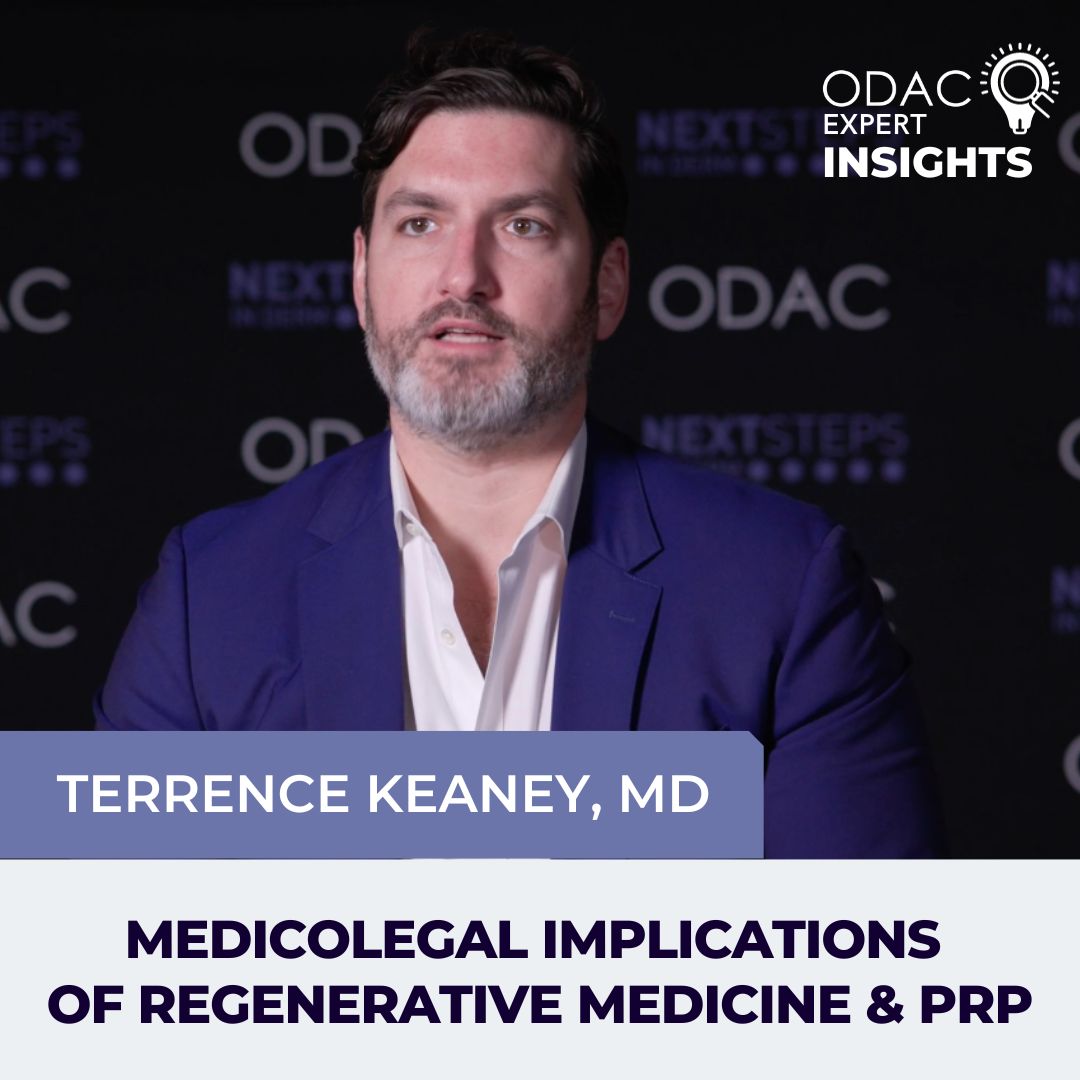Next Steps in Derm, in partnership with ODAC Dermatology, Aesthetic & Surgical Conference, interviewed Dr. Terrance Keaney, assistant clinical faculty of dermatology at GW School of Medicine and Health Sciences, and Howard University. Watch and find out why the FDA and Department of Justice are giving more attention to regenerative medicine in recent years. Learn how the FDA views platelet-rich plasma from a regulatory perspective. Plus hear how you can appropriately talk about PRP with your patients and the public.
Further Reading
If you want to read more about PRP, check out the following articles published in the Journal of Drugs in Dermatology:
The Role of Platelet Homeostasis in a Novel Topical PRP Formulation
ABSTRACT
Background: Topical platelet-rich plasma (PRP) must demonstrate stability to insure biologic activity in aesthetic medicine.
Objective: The objective of this research was to evaluate the role of platelet homeostasis in a novel PRP topical cosmetic formulation to provide facial appearance improvement.
Methods: The stability of the topical PRP formulation was evaluated in vitro followed by clinical in vivo testing. The in vitro evaluation examined platelet stability and morphology over a 90-day period within the preservative cosmetic base utilizing ELISA and light microscopy (LM)/scanning electron microscopy (SEM). The in vivo clinical study enrolled 20 subjects in a 120-day double blind split face study to evaluate the effect of 5–7x concentrated PRP compared to 2–3x concentrated PRP on facial photoaging. Cosmetic effect was evaluated by the subject and the dermatologist investigator on a 5-point ordinal scale at baseline, week 8, and week 16.
Results: 90-day stability for the topical PRP formulation was verified via ELISA and LM/SEM. ELISA showed the PRP was more inactive than control conditions via analyte concentration curves (PDGF-AB, EGF, and P-Selectin). LM/SEM demonstrated the PRP had less aggregation/activation over time within the cosmetic base and that refrigeration is superior to room-temperature storage thus delaying full platelet degranulation. The in vivo clinical study demonstrated parity between 20ml and 60ml PRP in terms of clinical efficacy.
Conclusion: Platelets remain viable for up to 90 days in a refrigerated cosmetic vehicle with demonstrated topical clinical PRP facial benefits. PRP kits of 20ml and 60ml volumes for topical PRP are equally efficacious.
The Utility of Platelet-Rich Plasma for the Treatment of Alopecia
ABSTRACT
Importance: Platelet-rich plasma (PRP) is a novel therapy for alopecia. Although the use of PRP remains under investigation, medical practitioners administer PRP for hair regrowth without quantitative evidence of clinical results.
Objective: Systematically review literature regarding PRP for alopecia.
Evidence Review: PRISMA guidelines were utilized to search the PubMed database in May 2019 with search terms “platelet rich plasma” and “hair”, “hair loss”, or “alopecia”. Manuscripts were included if they were written in English and described PRP treatment in human subjects with alopecia.
Findings: Sixty-one articles discussed the use of PRP as monotherapy, or in combination with other medical modalities, for the treatment of androgenetic alopecia (AGA), alopecia areata (AA), and cicatricial alopecia, ranging from level Ib to IV evidence. PRP results in significant increase in hair density and hair shaft width in AGA patients, with high rates of patient satisfaction and minimal adverse events. Data heterogeneity and limited number of well-designed, large-scale clinical trials were limitations of this review.
Conclusions and Relevance: Preliminary results regarding the use of PRP for AGA, AA, and cicatricial alopecias are promising. Physicians should be aware that current studies often report qualitative, rather than quantitative, clinical outcomes and should counsel patients regarding PRP treatment efficacy accordingly.
Did you enjoy this video interview? Find more here.

